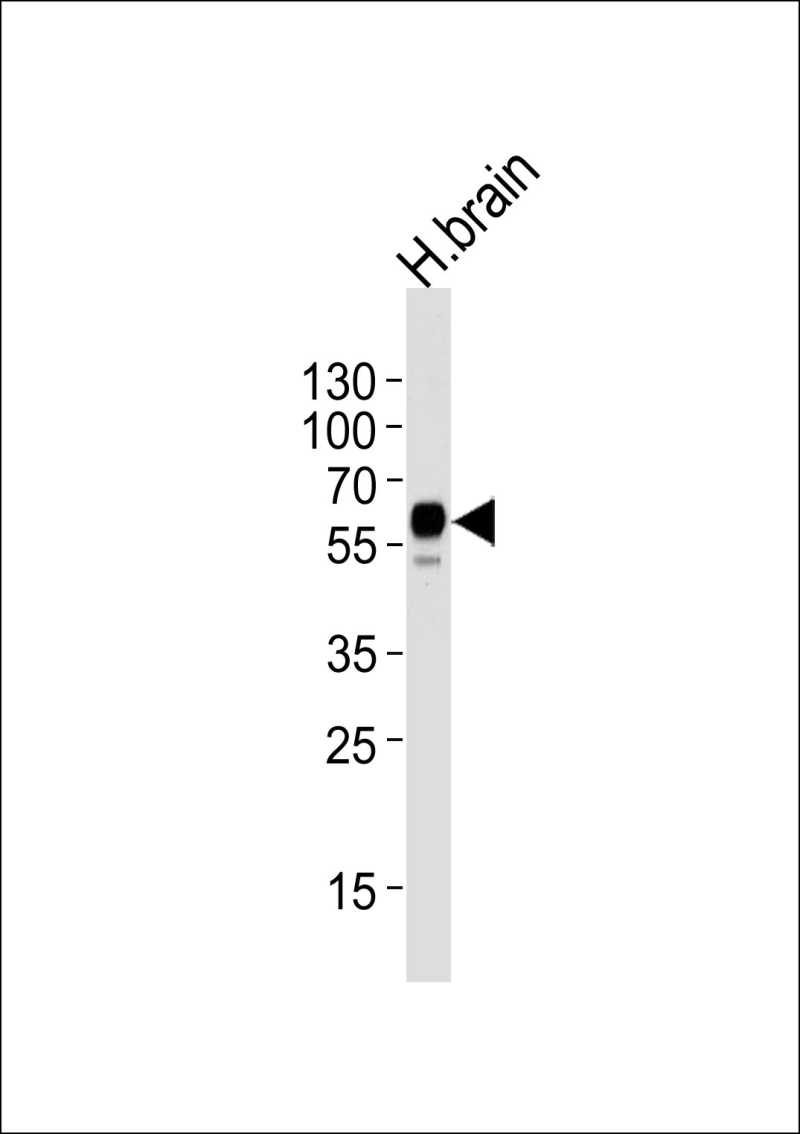
| WB | 1/1000 | Human,Mouse,Rat |
| IF | 咨询技术 | Human,Mouse,Rat |
| IHC | 咨询技术 | Human,Mouse,Rat |
| ICC | 技术咨询 | Human,Mouse,Rat |
| FCM | 咨询技术 | Human,Mouse,Rat |
| Elisa | 咨询技术 | Human,Mouse,Rat |
| Aliases | Leucine-rich repeat transmembrane neuronal protein 2, Leucine-rich repeat neuronal 2 protein, LRRTM2, KIAA0416, LRRN2 |
| Entrez GeneID | 26045 |
| WB Predicted band size | 59.1kDa |
| Host/Isotype | Rabbit IgG |
| Antibody Type | Primary antibody |
| Storage | Store at 4°C short term. Aliquot and store at -20°C long term. Avoid freeze/thaw cycles. |
| Species Reactivity | Human |
| Immunogen | This LRRTM2 antibody is generated from rabbits immunized with a KLH conjugated synthetic peptide between 465-491 amino acids from the C-terminal region of human LRRTM2. |
| Formulation | Purified antibody in PBS with 0.05% sodium azide. |
+ +
以下是3篇关于LRRTM2抗体的参考文献摘要概括(基于已有研究推测内容,建议通过学术数据库核实原文细节):
1. **"LRRTM2 interacts with Neurexin1 to regulate excitatory synapse formation"**
- **作者**: de Wit J, et al.
- **摘要**: 研究揭示了LRRTM2作为突触后粘附分子,通过结合突触前膜Neurexin1调控兴奋性突触的形成。文中使用LRRTM2抗体进行免疫荧光定位,证实其在神经元树突的富集分布。
2. **"LRRTM2 drives excitatory synapse development through trans-synaptic interaction with PTPσ"**
- **作者**: Ko J, et al.
- **摘要**: 发现LRRTM2通过结合受体型酪氨酸磷酸酶PTPσ促进突触前分化。研究采用LRRTM2抗体进行免疫共沉淀和Western blot,验证了其与PTPσ的相互作用。
3. **"LRRTM2 is differentially expressed in Alzheimer's disease brains"**
- **作者**: Siddiqui TJ, et al.
- **摘要**: 分析阿尔茨海默病患者脑组织发现LRRTM2蛋白表达显著降低,通过抗体介导的免疫组化显示其与淀粉样斑块病理相关,提示其潜在神经保护作用。
**提示**:以上内容为模拟概括,实际文献需通过PubMed/Google Scholar以“LRRTM2 antibody”为关键词检索确认。
The leucine-rich repeat transmembrane neuronal protein 2 (LRRTM2) is a synaptic cell adhesion molecule predominantly expressed in the central nervous system. As a member of the LRRTM family (LRRTM1-4), it localizes to postsynaptic membranes and plays a critical role in synapse formation, maintenance, and plasticity. LRRTM2 specifically interacts with presynaptic neurexins (NRXN1-3) via its extracellular leucine-rich repeat domain, facilitating excitatory glutamatergic synapse development. Its function overlaps with neuroligins but exhibits distinct spatial and temporal expression patterns.
Antibodies targeting LRRTM2 are essential tools for studying its distribution, interaction networks, and role in neurodevelopmental processes. These antibodies are commonly validated in techniques like immunohistochemistry, Western blotting, and immunoprecipitation. Research using LRRTM2 antibodies has revealed its involvement in hippocampal-dependent learning, dendritic spine maturation, and circuits linked to memory formation. Dysregulation of LRRTM2 has been implicated in neuropsychiatric disorders, including autism spectrum disorders and schizophrenia, making its antibodies valuable for mechanistic and diagnostic investigations.
Recent structural studies employing LRRTM2 antibodies highlight its modular architecture and binding specificity, advancing therapeutic strategies targeting synaptic adhesion pathways. Commercial antibodies often undergo specificity verification via knockout controls or epitope mapping, ensuring reliability in both basic and translational neuroscience research.
×